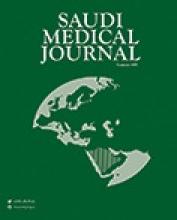Abstract
OBJECTIVE: To investigate whether hyperammonemia can lead to any structural change in liver and spleen tissues or biochemical changes in blood and if allopurinol (ALLO) has a protective effect in hyperammonemia.
METHODS: This study was conducted between April and May 2006. Thirty-six females Wistar Albino rats were randomly divided into 3 equal groups: Controls, administered with ammonia (NH3) and administered with NH3 + ALLO groups. Ammonium acetate (2.5 mmole/kg/day) was injected to NH3 group intraperitoneally (IP) for 28 days. The other group received ammonium acetate (2.5 mmole/kg) plus ALLO (50 mg/kg) IP for 28 days. After finishing the study, blood and tissue samples were collected to perform histopathological and biochemical analysis.
RESULTS: Liver and spleen tissues were normal in the control group. In NH3 group, liver tissues were minimally vacuolar and granular degenerations and moderate mononuclear cell infiltration. However, there was no histopathological change in NH3 + ALLO group. Spleen tissues were normal in NH3 group. In biochemical analysis, there was no significant difference between the groups (p>0.05).
CONCLUSION: The ammonium acetate may cause minimal structural changes in rat liver and ALLO can prevent this. We found that biochemical parameters do not necessarily correlate with the histopathological findings.
- Copyright: © Saudi Medical Journal
This is an open-access article distributed under the terms of the Creative Commons Attribution-Noncommercial-Share Alike 3.0 Unported, which permits unrestricted use, distribution, and reproduction in any medium, provided the original work is properly cited.






